The 10 Hottest Cities in the U.S., Ranked

Some people prefer cool, wet weather, while others like it hot and dry. Luckily, no matter what you prefer, there’s somewhere in the U.S. that will suit you. Every year throughout the country, summer comes roaring in, bringing hot, sunny weather. And in some cities, winter never comes, making for prime vacation destinations. But which cities are the hottest?
If you’re considering moving to a new area but aren’t sure where to choose, we’re here to help. Whether you like cool weather year-round and are looking for places to avoid, or love it hot and sunny and want to avoid winter, Redfin has compiled a list of the hottest cities in the U.S. to help you move with confidence. Read on to discover if one of these cities is right for you.
How we measure the hottest cities
For our purposes of determining the “hottest” cities, this list will focus on cities that have the highest average annual temperature. An average annual temperature combines a city’s annual average daily high and low temperatures and averages them into one number. So, for a city to make this list, it must have hot summers and warm winters.
Some cities may see hot temperatures more frequently but have a lower yearly average temperature, eliminating them from this list. This will rule out places like Las Vegas, NV, and prioritize tropical locations. However, because hot summers are an important factor, we’ll make a note if cities have exceptionally hot summers.
Keep reading to see Redfin’s rankings of the hottest cities in the U.S. with a population of 75,000 or more.
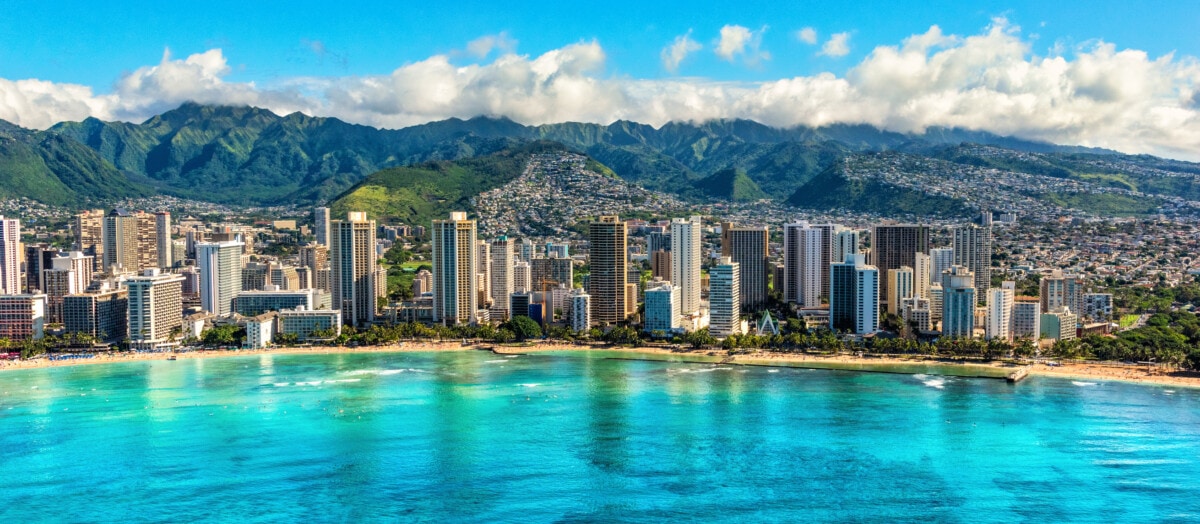
What are the hottest cities in the U.S.?
1. Honolulu, Hawaii
- Average annual temperature: 78.0 degrees
- Average number of days at or above 90 degrees: 25 days
- Record highest temperature: 95 degrees (1994/2019)
Honolulu, HI, is the hottest city in the U.S. This is entirely due to its tropical climate and warm ocean waters keeping temperatures mild year-round, with warm winters and generally pleasant summers. Temperatures rarely get above 90 degrees in a typical summer, and the lowest temperature on record is just 52 degrees. This helps make Honolulu a popular tourist destination, especially during the winter months.
Interestingly, Hawaii is also the rainiest state in the U.S., with some regions receiving more than 120 inches of rain per year.
So, do you want to move to the hottest city in the U.S.? If so, buying a home in Honolulu, HI, will cost an average of $625,000, which is well above the national average of $412,000. Or, if you’re thinking of renting an apartment, the monthly rent price for a one-bedroom apartment averages $1,450, compared to the national median of around $2,000.
Learn more about living in Honolulu.
2. Miami, Florida
- Average annual temperature: 77.4 degrees
- Average number of days at or above 90 degrees: 70 days
- Record highest temperature: 100 degrees (1942)
Miami, FL, is the second-hottest major city in the U.S. and first in the lower 48 states. Key West, FL, (78.9 degrees) is actually much warmer than Miami and would be the hottest city in the country, but due to its small population size, it’s excluded from this list.
Similar to Honolulu, Miami is so high on the list because of its tropical climate and warm ocean water, helping keep temperatures warm year-round but rarely hot. However, even though the city’s record high temperature of 100 degrees may seem relatively low, high humidity often pushes the heat index well above 110 degrees, making for dangerous conditions.
Buying a home in Miami will cost an average of $568,000, which is well above the national average. If you’re thinking of renting an apartment, the monthly rent price for a one-bedroom apartment averages $2,690
Learn more about living in Miami.
3. Brownsville, Texas
- Average annual temperature: 76.2 degrees
- Average number of days at or above 90 degrees: 126 days
- Record highest temperature: 106 degrees (2023)
Brownsville, TX, is the third-hottest city in the country and the southernmost city in Texas. Located on the warm Gulf Coast just north of Mexico and only a few hundred miles from Chihuahuan Desert, Brownsville benefits from both warm winters and hot summers. It’s also fairly dry compared to the tropical cities on this list, helping regularly push temperatures above 100 degrees during the summer and below 55 degrees in the winter. This fluctuation keeps the annual average temperature below tropical cities.
If living near the famous beaches of South Padre Island sounds appealing, buying a home in Brownsville will cost around $250,000, far below the national average. Or, if you’re thinking of renting an apartment, the average price for a one-bedroom apartment is around $775.
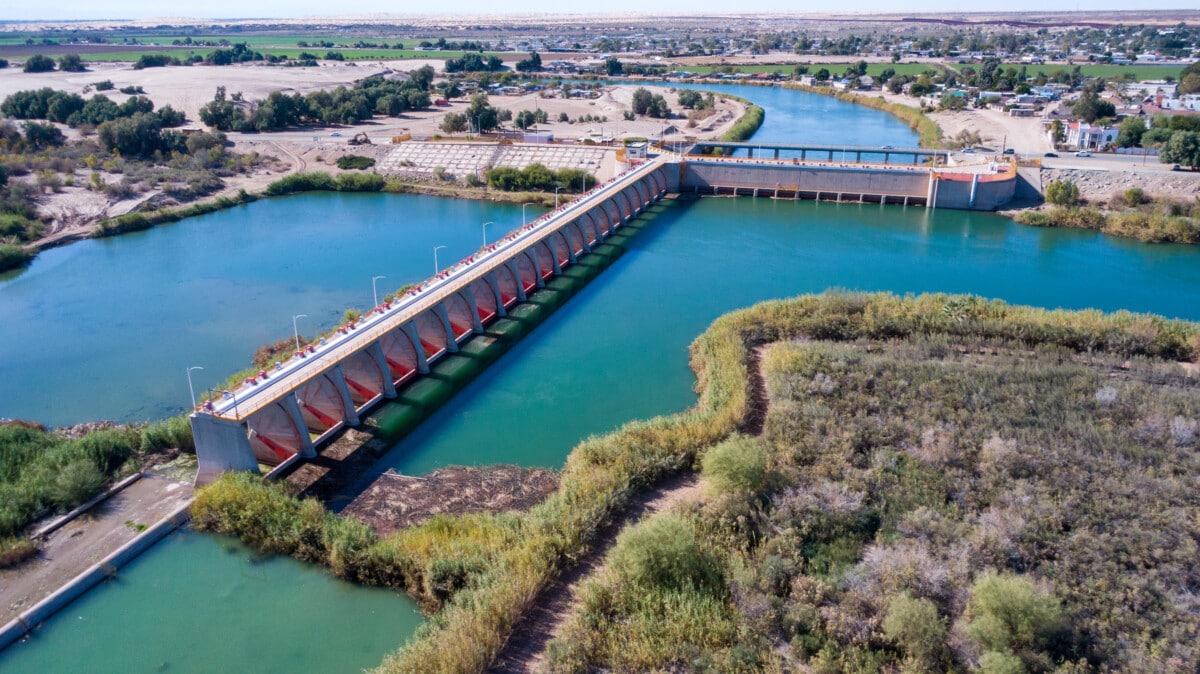
4. Yuma, Arizona
- Average annual temperature: 75.9 degrees
- Average number of days at or above 90 degrees: 183 days
- Record highest temperature: 124 degrees (1995)
Officially the sunniest city in the world, Yuma, AZ, is the fourth-hottest city in the U.S. and first located in the desert. Yuma is so high on the list primarily due to its summers. Summer high temperatures average 105.4 degrees, just ahead of Phoenix, making it the hottest city in the country for three months out of the year from June through August. However, due to its size, many people consider Phoenix the hottest city.
Yuma is known for its agriculture, especially its lettuce and other summer vegetables that are difficult to grow in the winter. In fact, winters in Yuma are known for being sunny and pleasant, and the winter harvesting season is a beloved annual tradition.
If you’re considering buying a home in Yuma, AZ, you’ll find that the median home sale price is around $321,000, below the national average. Or, if you’re thinking of renting an apartment, the average monthly rent price for a one-bedroom apartment is about $995.
5. West Palm Beach, Florida
- Average annual temperature: 75.8 degrees
- Average number of days at or above 90 degrees: 75 days
- Record highest temperature: 101 degrees (1942)
About 70 miles north of Miami, West Palm Beach, FL, is the fifth-hottest city in the country. The city experiences slightly cooler annual temperatures than its southern neighbor, but it also sees a few more days above 90 degrees due to its more northern location.
If moving to West Palm Beach sounds appealing, you’ll find the median home sale price to be $410,000, on par with the national average. Or, if you’re looking to rent an apartment, the average cost of a one-bedroom unit is about $2,500.
Learn more about living in West Palm Beach.
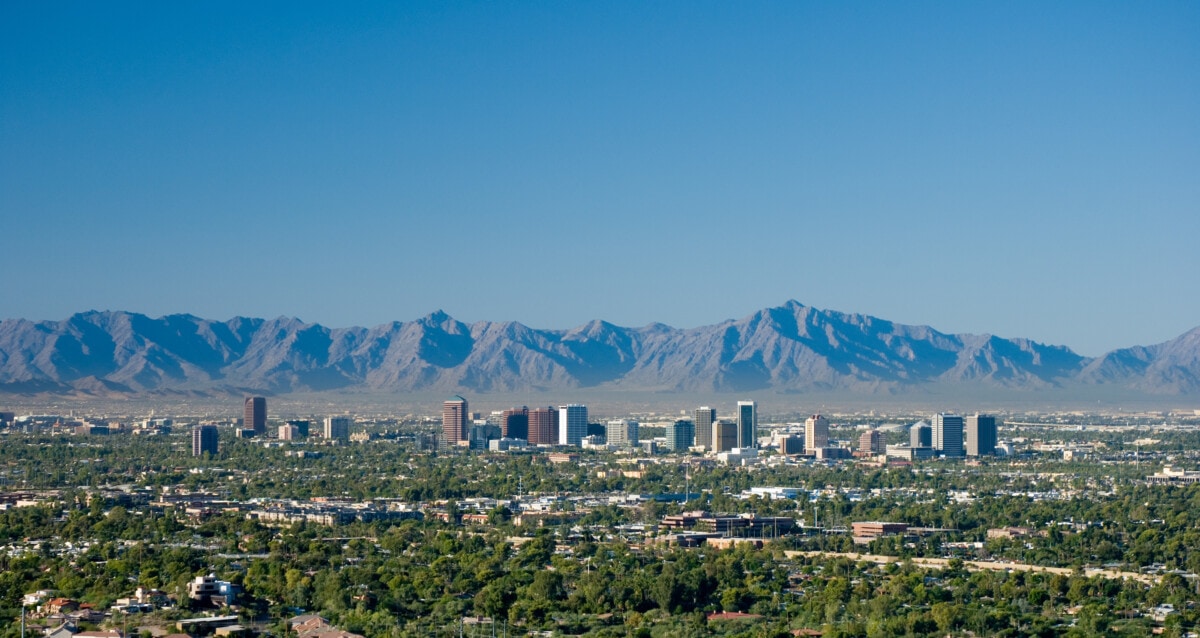
6. Phoenix, Arizona
- Average annual temperature: 75.6 degrees
- Average number of days at or above 90 degrees: 169 days
- Record highest temperature: 122 degrees (1990)
Phoenix is often considered the hottest city in the U.S. due to its extreme summer temperatures. However, it’s just the sixth-hottest city when factoring in winter temperatures. Phoenix is so hot because of its location in the rapidly warming Sonoran Desert, incredible amount of sunny days, and the urban heat island effect.
The average high temperature in the summer in Phoenix is 105.2 degrees, second only to Yuma and well ahead of Las Vegas (102.2), which is third-hottest. Recently, from June to July 2023, Phoenix endured 31 days with high temperatures above 110 degrees, the longest stretch on record, beating the previous record by a remarkable 13 days. Phoenix is also one of the fastest warming cities in the U.S., with nearly 80% of properties facing extreme heat risk.
If you’re planning on moving to one of the hottest (pun intended) migration destinations in the country, buying a house in Phoenix will cost an average of $440,000, just above the national average. Or, if renting an apartment is a better option, the monthly rent price for a one-bedroom apartment is $1,280.
Learn more about living in Phoenix.
7. Fort Myers, Florida
- Average annual temperature: 75.4 degrees
- Average number of days at or above 90 degrees: 100 days
- Record highest temperature: 103 degrees (1981)
The first city in western Florida, Fort Myers is the seventh-hottest city in the country.
Interestingly, Fort Myers sees far more days above 90 degrees than any other Florida city on this list. This is because the wind patterns change during the summer from primarily westerly winds to primarily easterly winds. As a result, Miami and other eastern cities remain milder due while the western side of the state gets warmer. However, due to its more northern location, it also gets cooler during the winter, keeping annual temperatures down.
Buying a home in Fort Myers will cost an average of $398,500, which is just below the national average. If you’re thinking of renting an apartment, the monthly rent price for a one-bedroom apartment averages $1,650
Learn more about living in Fort Myers.
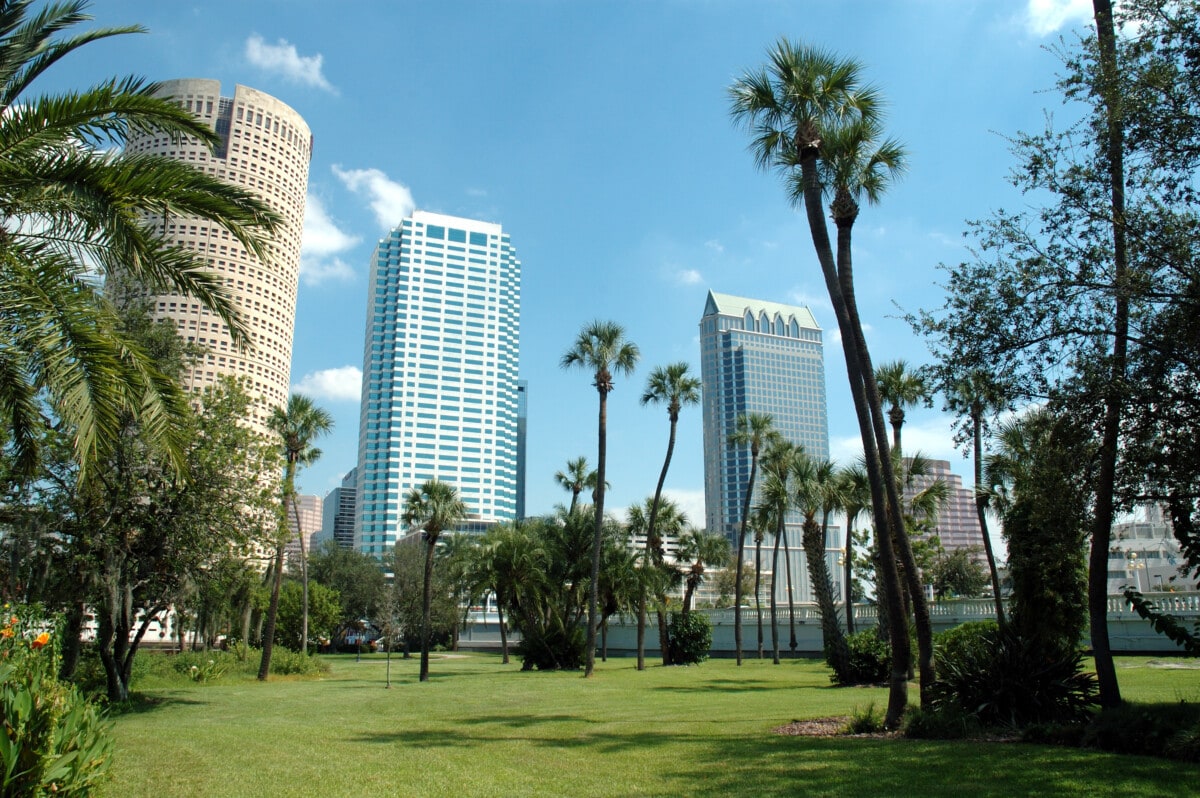
8. Tampa, Florida
- Average annual temperature: 74.5 degrees
- Average number of days at or above 90 degrees: 88 days
- Record highest temperature: 99 degrees (1985/2020)
Tampa, FL, is the eighth-hottest city in the U.S. and the second city in western Florida. Like other cities in the Sunshine State, Tampa rarely gets extremely hot but does stay warm throughout the year. Additionally, similar to Fort Myers, the city receives more days above 90 degrees along with cooler winter temperatures. Interestingly, Tampa has never reached 100 degrees due to cooling afternoon breezes from the coast, although heat indexes have reached over 110.
If you’re considering buying a home in Tampa, FL, you’ll find that the median home sale price is around $415,000, nearly identical to the national average. Or, if you’re thinking of renting an apartment, the average monthly rent price for a one-bedroom apartment is about $1,530.
Learn more about living in Tampa.
9. Orlando, Florida
- Average annual temperature: 73.8 degrees
- Average number of days at or above 90 degrees: 99 days
- Record highest temperature: 103 degrees (1921)
Home to Disney, Universal Studios, and much more, Orlando is the ninth-hottest city in the country. The primary reason for the city’s cooler climate is its inland location – the region is less influenced by mild and humid coastal winds, so it gets hotter in the summer and cooler in the winter. Additionally, the city is also drier and receives slightly less rain than cities like Tampa and Miami.
If you’re interested in moving to Florida’s entertainment capital, buying a house in Orlando will cost around 355,000, below the national average. Or if renting an apartment is more in your budget, you’ll find the average rent price for a one-bedroom apartment to be around $1,700.
Learn more about living in Orlando.
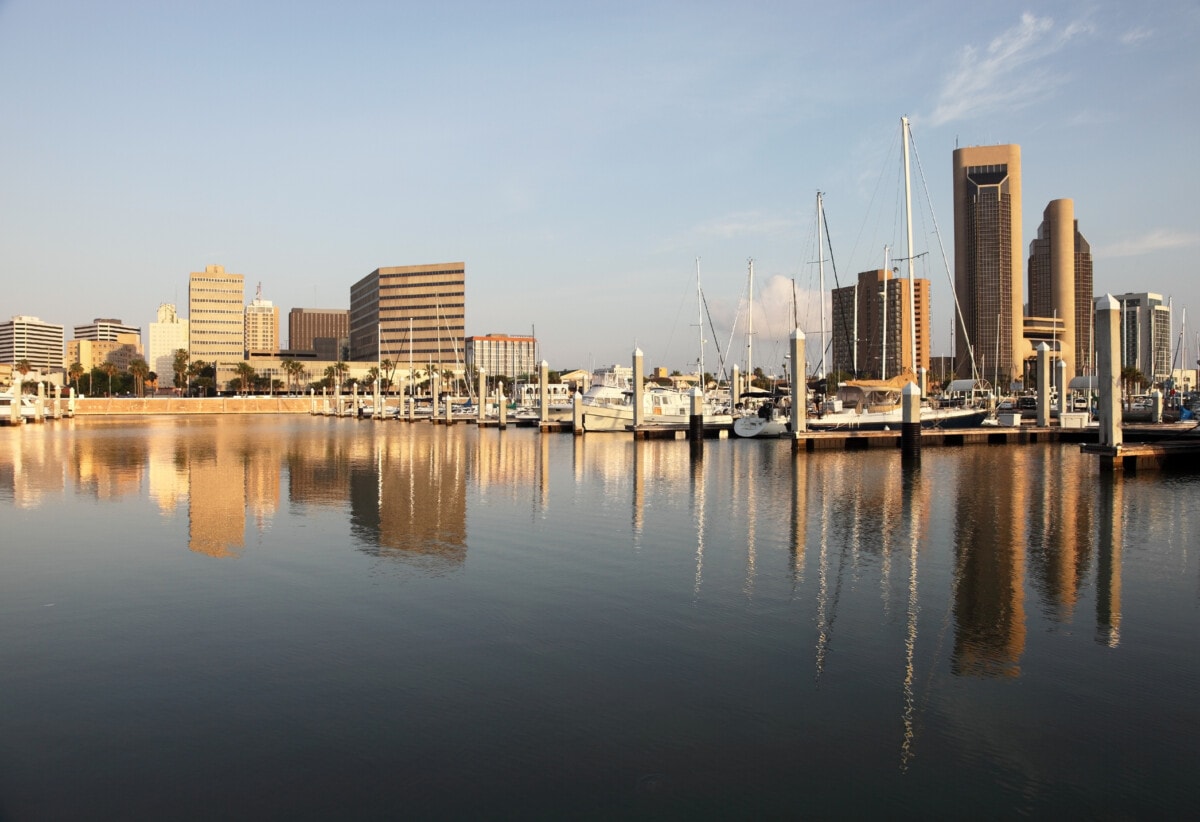
10. Corpus Christi, Texas
- Average annual temperature: 73.0 degrees
- Average number of days at or above 90 degrees: 113 days
- Record highest temperature: 109 degrees (2000)
Rounding out our list of the hottest cities in the U.S. is Corpus Christi, TX. The city is located on the Gulf of Mexico and sees hot and humid weather throughout the year, especially in the summer. However, compared to the tropical coasts of Florida, Corpus Christi experiences greater fluctuations in temperature, regularly topping 100 degrees every summer. Humidity can play a major role in summer temperatures.
Recently in 2023, Corpus Christi saw its hottest summer on record, which was made even more unbearable due to very high humidity. In fact, the city saw a heat index of 125 degrees, which is dangerously hot.
Buying a home in Corpus Christi will cost an average of $253,000, which is far below the national average. If you’re thinking of renting an apartment, the monthly rent price for a one-bedroom apartment averages around $1,000.
Learn more about living in Corpus Christi.
What is the hottest place in the U.S.?
Death Valley National Park, which straddles the California–Nevada border east of the Sierra Nevadas, is the hottest place in the U.S. The national park has an average annual temperature of 78.8 degrees and average summer high temperature of 114.8. However, nobody lives there full-time, so it’s not included in our list.
Not only is Death Valley the hottest place in the country, but it’s also seen the hottest temperatures ever recorded on earth. The national park hit 134.0 degrees in 1913, which is recognized as the hottest temperature in history, although this has been disputed. It’s also seen the second-hottest temperature of 129.9 degrees in 2021, along with several similar highs in recent years.
The reason the desert gets so hot is because it sits around 280 feet below sea level and has some of the highest barometric pressure in the world. Higher pressure leads to more energy, which results in hotter air.
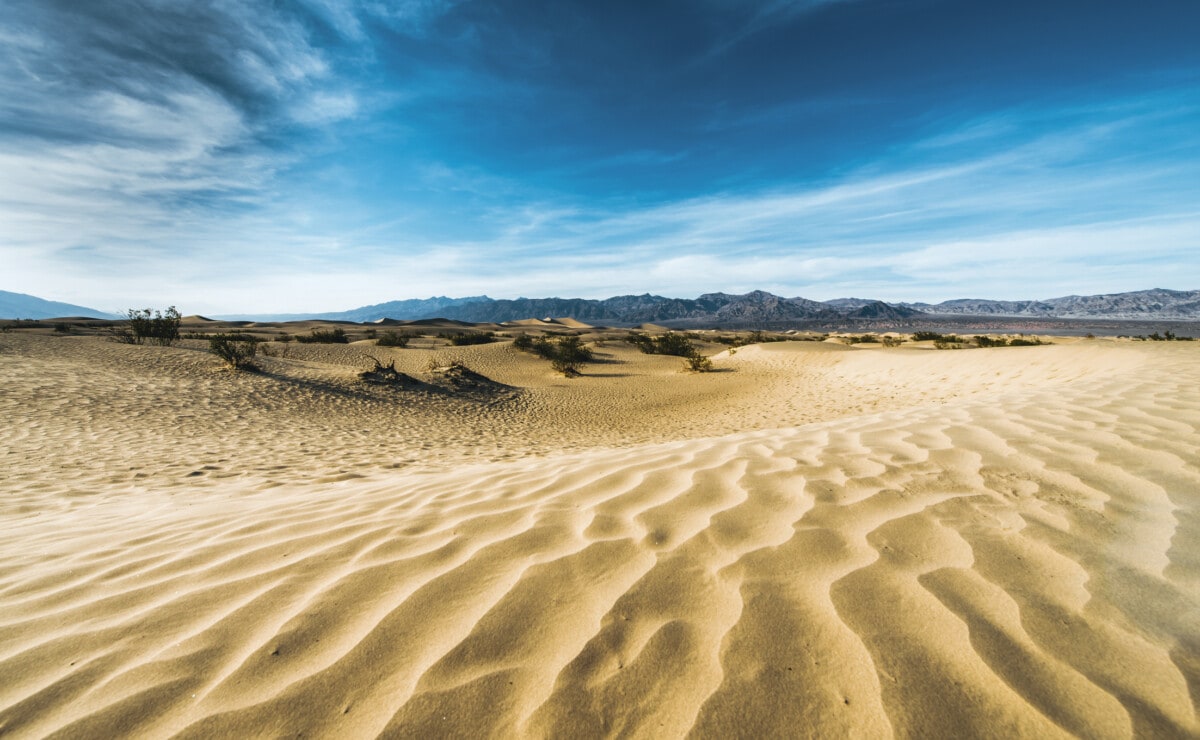
How are temperatures changing?
Due to global warming and climate change, research shows that temperatures will get hotter more frequently across the country, which will likely make some places on this list uninhabitable to humans within the next 50-80 years without extreme reductions in greenhouse gas emissions.
Tropical areas and places closer to warm water are most at risk of unbearable heat due to their higher humidity, which leads to extremely high heat indexes (what the temperature actually feels like). This is why Southeastern and Eastern U.S. cities have the highest heat risks in the country. The Southwest isn’t far behind, either. In fact, 100% of properties in every city on this list have a major or greater heat risk.
The best way to slow global warming and reduce the effects of climate change is to ask policymakers to prioritize climate legislation and to do your part to reduce your carbon footprint. Limiting average global warming to below 1.5 degrees Celsius is considered the best way to reduce extreme heat events.
Methodology
This list contains average annual temperature data for major cities with over 75,000 residents according to the 2020 census. 2020 Comparative Climatic Data was obtained from the National Oceanic and Atmospheric Administration (NOAA) and its subsidiary, the National Centers for Environmental Information (NCEI). Additional data found on the U.S. Climate Normals database. All temperatures are in Fahrenheit unless otherwise noted.
The post The 10 Hottest Cities in the U.S., Ranked appeared first on Redfin | Real Estate Tips for Home Buying, Selling & More.
